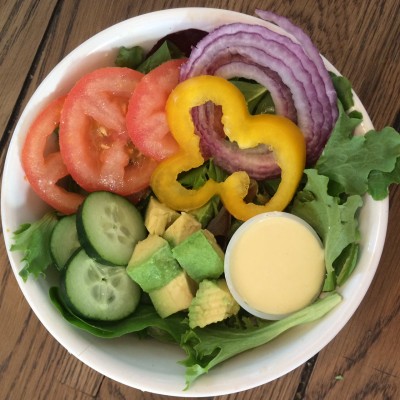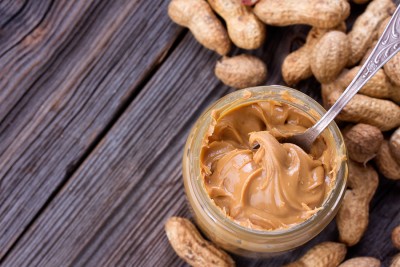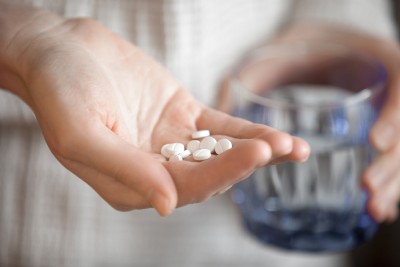Podcast: Play in new window | Download
Subscribe:
Top 10 Ways to Lower Blood Pressure Naturally
“Is your blood pressure really 150/100 my doctor asked?”
I stared at him in disbelief. It couldn’t be correct. I wasn’t even 30 years old at the time.
“I think I’m just a little stressed coming into the doctor’s office,” I replied.
Studies show that there is a 90% chance you will suffer from high blood pressure. Common high blood pressure symptoms include fatigue and headaches.
Last week a new study reported that getting your blood pressure below 140/90 is no longer the goal. Now, if you want to protect your brain and heart, your blood pressure needs to be below 120/80.
If you talk with your doctor about lowering blood pressure naturally, they will probably just tell you to cut back on the salt. Contrary to what your doctor may tell you, in this article I will show you that salt is not the main enemy when it comes to lowering blood pressure naturally.
Anything Over 120/80 is Prematurely Aging You
High blood pressure wears out your brain causing premature memory problems, wears out your heart causing shortness of breath, and wears out your kidneys causing fluid retention. High blood pressure is also one of the main causes of atrial fibrillation leading to blood clots and strokes.
Studies show that any blood pressure readings over 120/80 is causing you to age prematurely. Day by day this high blood pressure is silently wearing out your organs and causing your arteries to clog up.
How Did We Get 120/80 as the New Goal?
In my medical school days it was accepted that blood pressure increased with age. This was just part of “growing old.”
However, over the last couple of decades we have seen the target systolic blood pressure (top number) decrease from 160 mmHg to 140 mmHg and now to 120 mmHg based on this newest study.
On November 9th the long-awaited SPRINT Study was finally published in the most prestigious medical journal in the world. After 8 long years, 9,361 patients, and 157 million dollars our government’s sponsored blood pressure study was finally completed. What did we learn from 157 million tax payer dollars?
First of all, to get the typical American to a systolic blood pressure of 120, without making any serious efforts at lifestyle changes, required a lot of medications. In fact, in the SPRINT study it took an average of 2.8 medications to get Americans to the 120 mmHg systolic blood pressure goal.
How much did these patients benefit from a systolic blood pressure of 120 versus the previous standard of 140?
1. An 11% trend toward lower strokes
2. The heart failure risk was reduced by 38%
3. Death from heart disease was reduced by 43%
4. Death from any cause was reduced by 27%
The fact that you could dramatically prolong life with just one more blood pressure medication got most of the cardiology community very excited and inspired to more aggressively control hypertension.
Why Did it Take 3 Blood Pressure Medications to Get to 120/80?
Why did it take so many medications to get the systolic blood pressure down to 120? Unfortunately, these medications are not as effective as one might think.
For example, the typical blood pressure medication only lowers blood pressure by about 8 points. Thus, if your systolic blood pressure is 144 mmHg, it is likely going to take 3 medications to get you to the new goal of 120 mmHg.
What Are the Risks of 3 Blood Pressure Meds?
How risky is it to put people on 3 different blood pressure medications just to get their systolic blood pressure down to 120 mmHg? In real dollars, this cost can be measured by increased emergency room visits.
In the SPRINT Study, emergency room visits definitely went up for the patients taking an average of 3 blood pressure medications. I suspect that much of this increase was likely because the study protocol promoted the use of diuretics, or “water pills,” to lower blood pressure.
Diuretics are well known to be hard on the kidneys, cause electrolyte problems, and increase the risk of fainting from dehydration. Below are the risks of lowering the systolic blood pressure from 140 to the new goal of 120 with medications:
1. The risk of fainting was increased by 46%.
2. The risk of kidney injury went up by 69%.
3. The risk of too low of a blood pressure was increased by 70%.
4. The risk of an electrolyte abnormality was increased by 36%.
Are all of these increased risks worth it to reduce the risk of premature death by 27%? Based on my discussions with colleagues, your cardiologist will probably say yes.
These risks from blood pressure medicines are real. Having once worked as an emergency room doctor on nights and weekends to help support my family during my cardiology training at Stanford University, I also saw many of these same side effects from blood pressure medications. Fortunately, I did not suffer from any side effects when I once took lisinopril or losartan to control my high blood pressure.
Cardiologists Embrace More Meds to Control Blood Pressure
The SPRINT Study has confirmed what cardiologists have long known, when it comes to blood pressure lower is better. And a lower blood pressure keeps your organs and you much younger.
My only concern is that we have totally overlooked the side effects of “polypharmacy.” Polypharmacy is the term we use in the medical community to describe a situation where a patient is on a lot of medications and is at risk for many medication side effects.
Is there a Better Way?
It goes without saying that if we could slow down the aging process with a naturally lower blood pressure, free of medications, that would be ideal. Unfortunately, most physicians either don’t have the time or believe that you can really lower your blood pressure that much naturally.
Having seen my own blood pressure drop from the 140/90 range, peaking at 150/100, to readings consistently around 110/65 without medications, it can certainly be done. I have also seen this same thing in hundreds of my patients.
However, to get to a healthy blood pressure without medications will require a faithful commitment to a very healthy lifestyle. Also, these lifestyle changes need to be implemented as early as possible to prevent high blood pressure from causing permanent damage and becoming a permanent condition.
How Should I Track Blood Pressure?
Everyone needs to know their blood pressure. Even if your blood pressure is fine now, you need to watch this closely as 90% of people will ultimately develop hypertension or a blood pressure above 140/90.
Every home should have a blood pressure monitor. Blood pressure monitors are very affordable and a good machine will only set you back about $50. You don’t need a prescription to buy one. To find the best blood pressure monitor either speak with your pharmacist or read this Consumer Reports article.
How Do You Take an Accurate Blood Pressure?
To take an accurate blood pressure, you need to be seated in a relaxed environment for 5 minutes. Also, your arm should be at the level of your heart.
You may need to take several readings as blood pressure readings can fluctuate from measurement to measurement. If you are nervous when checking your blood pressure you may need to take several readings until the effects of stress go away.
How Often Should You Check Your Blood Pressure?
This is a question I am often asked and my answer is generally, it depends. If your doctor has just changed one of your blood pressure medications then you need to check it frequently.
“Doc, I just fainted,” is something I often hear when people on blood pressure medications make many healthy lifestyle changes all at once. Some patients have even hit their heads hard in the bathroom from these fainting episodes.
As weight loss and other healthy lifestyle changes can quickly drop your blood pressure, if you are on blood pressure medications you will need to check your blood pressure regularly and stay in close communication with your physician. Once your blood pressure has stabilized then a weekly check may be enough. Talk with your doctor to find out how often they would like you to check your blood pressure.
What Should You Do If Your Blood Pressure is too Low?
If you are on blood pressure medications, and are making healthy lifestyle changes, your blood pressure may start dropping really fast. Besides notifying your doctor, what can you do if your blood pressure drops dangerously low from medications?
In general, hydration and salt reverses most cases of low blood pressure from too much medication. Of course, your doctor will also likely need to cut back on some of your medications to keep this from happening again.
Top 10 Ways to Lower Blood Pressure Naturally
Most of my committed patients can get their blood pressure to goal with minimal to no medications. To help you get to a systolic blood pressure of 120 mmHg without medications, here are 10 scientifically proven ways to lower blood pressure naturally.
1. Lose 20 Pounds: 10 point reduction
I can’t tell you how many patients I have seen where getting to a healthy weight dramatically dropped their blood pressure. One review of 8 studies showed that for every 2 pounds you lose, you can drop your systolic blood pressure by 1 point.
In my case, both my weight and my systolic blood pressure dropped by more than 30. Of course, there were many healthy lifestyle changes that I made so it is hard to know how much of this blood pressure reduction came from weight loss and how much came from the other strategies I have listed below.
2. Limit Sugar: 8 point reduction
While your physician will probably tell you to restrict the salt if you want to lower your blood pressure, reducing the other white crystal, sugar, will drop your blood pressure even more. In fact, studies show that sugar can raise your systolic blood pressure by 8 points. Another study showed that just a 24 ounce (710 mL) drink of sugary soda pop temporarily raised the blood pressure by 15 points!
To always keep your blood pressure in the healthy zone, try limiting all added sugars to the World Health Organization’s recommended 25 grams per day. To put this in perspective, one 12 ounce can of Coke has 39 grams of sugar.
3. Move More: 7 point reduction
Have you ever noticed how much lower your blood pressure is after you have exercised? These blood pressure lowering effects can last up to half of your waking hours. In general, most people can expect to lower their systolic blood pressure by about 7 points from daily exercise which is the equivalent of one blood pressure medication.
4. Bulk Up on Fiber: 6.0 point reduction
High fiber foods, like fruits, vegetables, nuts, seeds, and legumes, can dramatically lower your blood pressure. Indeed, a review of 25 studies published on the effect of fiber in the diet showed that a high fiber diet could reduce systolic blood pressure by 6 points. While nutritional guidelines report that you should shoot for approximately 30 grams of fiber each day, most Americans fall far short at an average of just 15 grams daily.
An easy way to track your fiber intake is to use a smartphone app like Lose It or My Fitness Pal. Personally, I use the free version of Lose It on my iPhone and consistently average approximately 70 grams of fiber each day. To easily surpass the recommended 30 grams of fiber each day, I tell my patients to shoot for 9 servings daily of fruits and vegetables as well as a daily serving of nuts or seeds and legumes.
5. Fruits, Vegetables, and Limited Saturated Fats: 5.5 point reduction
This recommendation comes from the DASH Diet Study. In this very well designed study, people who increased their fruit and vegetable intake, while also minimizing saturated fats from meat and dairy, were able to drop their systolic blood pressure 6 points. If you dissect this 6 point reduction, 3 points comes from increasing fruits and vegetables whereas the other 3 points comes from limiting saturated fat from meat and dairy.
6. Nitric Oxide from Greens and Root Vegetables: 5.4 point reduction
Nitric oxide is a powerful vasodilator which means it relaxes and dilates your arteries. This vasodilation effect can dramatically reduce blood pressure. Nitric oxide should not be confused with nitrous oxide which is commonly referred to as “laughing gas.”
Foods highest in nitric oxide include greens, especially spinach, and root vegetables like beets. One study showed that eating spinach soup daily for a week lowered systolic blood pressure by 3.4 points.
Another study looked at the effects of beet root juice. In this study, beet root juice lowered the systolic blood pressure by 5.4 points.
To keep your blood pressure where it should be, make sure you get your greens or root vegetables every day.
7. More Minerals: 5.0 point reduction
Plant based sources of potassium, magnesium, and calcium can all have a dramatic blood pressure lowering effect. Many researchers believe that it is these minerals which account for the 5 point lower blood pressure typically seen in vegetarians.
When I share the blood pressure lowering effects of minerals with my patients, most ask if they should take supplements. Unfortunately, studies also show that mineral supplementation generally does not lower blood pressure.
In general, if you are eating 9 servings of fruits and vegetables, a serving of nuts or seeds, and a serving of legumes each day you will get plenty of the plant based sources of magnesium, potassium, and calcium.
8. Eliminate Unnecessary Stress: 5.0 point reduction
Modern life is stressful enough. We don’t need any unnecessary stress in our lives further exacerbating things. For example, people crushed by chronic stress typically run blood pressures 5 points higher. Even stressful situations can shoot your blood pressure up.
For example, this week I appeared on our local TV station to discuss this blog article. As part of this TV segment, I had my blood pressure checked on live TV. To my shock, my blood pressure shot up over 50 points. Here is the link to see this TV segment.
When this happens at the doctor’s office we call it “white coat hypertension.” White coat hypertension refers to a situation, like a doctor’s white coat, where stressful situations elevate the blood pressure. While once considered benign, newer studies report risks associated with white coat hypertension.
It is critically important that you find a way to reduce or eliminate unnecessary stress in your life. For me, my ultimate stress reducer is to exercise outside. For others yoga and meditation can be very helpful. Perhaps this is why some studies show a 16 point blood pressure reduction with yoga and a 5 point blood pressure lowering effect from meditation.
9. Better Sleep: 4.8 point reduction
Sleep is often a much overlooked way to lower your blood pressure. I have found that most of my cardiac patients suffer from sleep apnea. Sleep apnea is a condition where people snore loudly and periodically stop breathing while sleeping.
Fortunately, sleep apnea can be easily treated by sleeping with a C-PAP machine. Studies of C-PAP therapy show a blood pressure reduction of about 5 points.
While correcting sleep apnea is important, you also have to sleep long enough to keep your blood pressure down. With regards to sleep duration, one study showed that sleeping an extra 35 minutes could decrease systolic blood pressure by up to 14 points.
10. Limit Salt: 4.8 point reduction
“I never use the salt shaker,” patients often proudly tell me when we discuss ways to lower their blood pressure. It seems that salt is still demonized as the major cause of high blood pressure.
Most of my patients are surprised when I tell them that for 99% of my patients I don’t worry about the salt shaker at all. When it comes to salt and hypertension my concern is with processed food, fast food, and restaurant food. Indeed, according to the World Health Organization, 80% of our sodium comes from these sources.
For example, two slices of whole wheat bread has 500 mg of sodium. Many salad dressings also contain 500 mg of sodium just from two small tablespoons. Pizza may be the worst offender as just one slice could easily top 1,000 mg of sodium.
How low should you go with the sodium? Most studies seem to put the “sweet spot” at about 2,300 mg daily which is certainly more than the currently recommended 1,500 mg from the American Heart Association. In salt sensitive people with high blood pressure their physicians may want to shoot for the targets set by the American Heart Association.
Final Thoughts
Based on my own experience, as well as that of hundreds of my patients, high blood pressure is completely reversible if healthy lifestyle changes can be implemented before high blood pressure becomes a permanent condition. The key is to start today on at least one of these top 10 scientifically proven ways to lower blood pressure naturally.
To help us to get the word out that people don’t have to unnecessarily suffer from high blood pressure, or the medications used to treat high blood pressure, please share this article with friends and family members.
If you suffer from high blood pressure, or take high blood pressure medications, never self treat or stop medications without your doctor’s approval. Hypertension is one of the main causes of dementia, heart attacks, and strokes and you don’t want to put yourself at unnecessary risk.





































































































